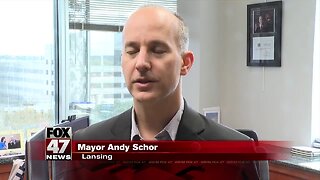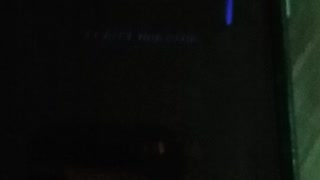Premium Only Content

Researchers Breathe Life Into Hopes For Lab-Grown Lungs
Dr. Hans Snoeck and his team at Columbia University Medical Center are transforming human stem cells into functional lung cells.<br />
<br />
It's a development that could eventually revolutionize the treatment of lung disease and make bio-engineering a reality...<br />
<br />
Snoeck says the cells could one day form the building blocks of laboratory-made lungs that won't be rejected after transplantation.<br />
<br />
He says they could also be used to test new therapeutic drugs, an impossibility today, because the cells where lung disease forms are deep inside the organ and inaccessible for study.<br />
<br />
(SOUNDBITE) (English) DR. HANS SNOECK, PROFESSOR OF MEDICINE AND MICROBIOLOGY AND IMMUNOLOGY AT COLUMBIA UNIVERSITY MEDICAL CENTER SAYING:<br />
<br />
"It's been very hard to start studying this disease because once patients have the disease the whole lung is almost destroyed. If we can make the cells that we believe or that the field believes is at the basis of this disease and study this in a dish it would open up enormous possibilities to begin to understand this disease."<br />
<br />
At the center of their experiments are so-called type 2 epithereal cells, which are critical for lung function. They produce a substance called refractant that keeps the lungs open and functional…but they're also the cells where the disease first takes hold.<br />
<br />
(SOUNDBITE) (English) DR. HANS SNOECK, PROFESSOR OF MEDICINE AND MICROBIOLOGY AND IMMUNOLOGY AT COLUMBIA UNIVERSITY MEDICAL CENTER SAYING:<br />
<br />
"Many lung diseases center around this specific cell. and what we can do now is take skin cells from a patient, reprogram those two stem cells, make these type 2 cells from these patients and study exactly what is wrong with these cells. If we can find what is wrong with these cells we can also start screening for drugs and develop drugs to treat these diseases. And an example of such a disease is something called idiopathic lung fibrosis, a disease that kills between 20-30 thousand people in the US and for which there is no treatment whatsoever. So one of the things we'd like to do is start modeling the disease using the approach we've developed."<br />
<br />
And even more exciting, says Snoeck is the possibilities their research presents for the development of rejection-proof lungs, that could be made in the lab.<br />
<br />
(SOUNDBITE) DR. HANS SNOECK, PROFESSOR OF MEDICINE AND MICROBIOLOGY AND IMMUNOLOGY AT COLUMBIA UNIVERSITY MEDICAL CENTER SAYING:<br />
<br />
"One thing we dream of is that we could use the cells we generated from these patient and put them on a donor lung from which we removed from all the donor cells. and in this way we'll have a donor lung the whole scaffold, the structure, is from a donor but all the cells will be from the patient."<br />
<br />
But to produce enough cells to repopulate an entire lung, might be an impossible challenge. Still, Snoeck and his bio-engineering colleague Gordana Vunjak-Novakovic believe the ultimate goal might be achievable by enlisting the help of the body's own cell building system.<br />
<br />
(SOUNDBITE) (English) GORDANA VUNJAK-NOVAKOVIC, PROFESSOR OF BIOMEDICAL ENGINEERING AT COLUMBIA UNIVERSITY MEDICAL CENTER SAYING:<br />
<br />
"One approach that we took is to try to think about building healthy nuclei within the diseased lungs and then count on the body to do part of the process of regeneration starting from these healthy nuclei. We saw in the lab that this principle works in many different tissues and we would like to apply it to the lung tissue."<br />
<br />
The researchers say there's still a long way to go before a lung can be successfully reseeded, but they are confident, the era of bioengineered organs, from livers to lungs, is not that far off. Credit Reuters.
-
 1:38
1:38
WFTX
5 years agoResearchers look into COVID-19 transmission on children
75 -
 4:45
4:45
PowerofPositivity
6 years agoResearchers Reveal That Messy People Are Actually Productive Geniuses
1.04K1 -
 1:20
1:20
WFTX
5 years agoResearchers use virtual reality to better understand coronavirus' impact on lungs
22 -
 1:03
1:03
Digital Trends
5 years agoResearchers turned beetles into photographers for the sake of science
580 -
 1:49
1:49
WSYM
6 years agoVacant Temple Building could breathe new life into Old Town
-
 1:49
1:49
WSYM
6 years agoVacant Temple Building could breathe new life into Old Town
3 -
 2:07
2:07
KNXV
6 years agoASU researchers behind a new push for "mechanical trees" to help capture CO2
24 -
 5:58
5:58
KTNV
5 years agoBreathe Clean & Easier
22 -
 0:21
0:21
pickles99
5 years agoCant breathe
51 -
 13:25
13:25
Ranker
5 years agoA day in the life living with the plague
1781